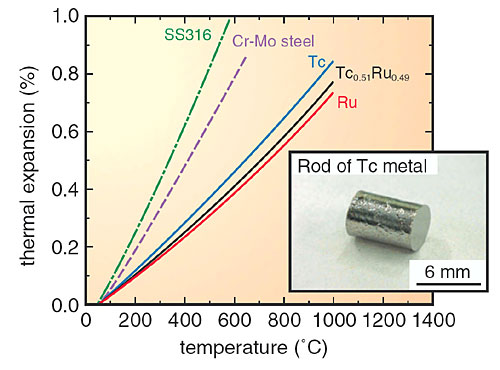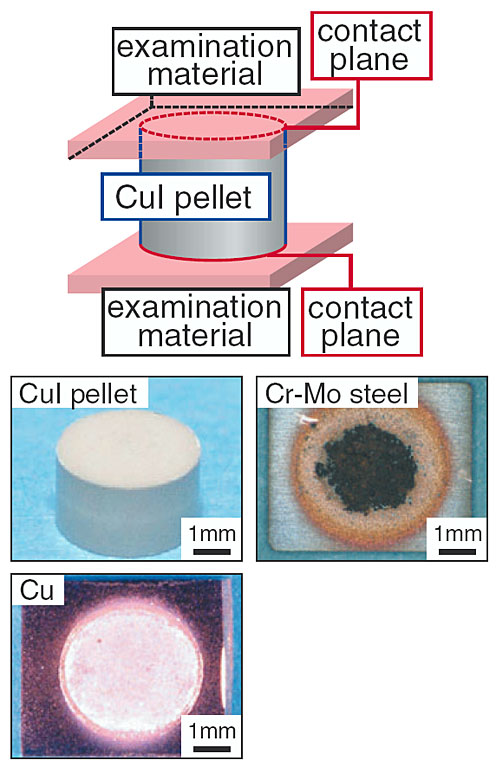Long-lived fission products such as 99Tc (half-life: 2.111 × 105 years) and 129I (half-life: 1.57 × 107 years) are contained in the spent nuclear fuel from nuclear power plants. If such long-lived fission products are disposed of as radioactive wastes in deep underground repositories, surveillance of the environment will have to be continued for a long time in order not to leak radioactive substances into the environment. On the other hand, if it is possible to partition 99Tc and 129I from spent fuels and to transmute 99Tc into stable 100Ru and 129I into stable 130Xe, the environmental burden of geological disposal could be reduced. In order to realize transmutation of long-lived fission products into stable nuclides, it is necessary to carry out a selection of targets for transmutation, some investigation of the thermal properties of the target, a determination of the compatibility of the cladding tube with the target, etc.
The most promising chemical form for a target for transmutation of 99Tc is a metal. However there were no available data with which to estimate the behavior of the Tc metal target during transmutation, and some investigation of thermal properties of the target was needed. Therefore Tc metal and Tc-Ru alloy samples were prepared in a glove box, and the fundamental properties of thermal expansion (Fig.8-1), heat capacity, and thermal diffusivity have been measured. The temperature variation and Ru concentration dependence in Tc-Ru alloys of these thermal properties have also been established. The Ru concentration in Tc-Ru alloys increases with transmutation of Tc.
In contrast with the case of Tc, it is necessary to select suitable chemical forms for the 129I transmutation target, which is unstable and reactive. Of chemical forms which are highly favorable for fabrication and handling of the target, CuI is one of just a few choices which are stable in air. But CuI has the property of reacting with the cladding tube and corroding it. Therefore a CuI pellet (Fig. 8-2) was prepared, and reactivity studies of CuI with a candidate material for the cladding tube (Cr-Mo steel) and with Cu metal were carried out. From the results of the reactivity tests, it was concluded that the corrosion of the cladding tube by the CuI could be avoided by putting a Cu metal liner between them. Thus, a target configuration for the transmutation of 129I, which consists of CuI, a Cu metal liner, and a cladding tube, was proposed for the first time ever.
Investigation of the thermal properties of Tc metal and Tc-Ru alloys, combined with a new proposal for the target configuration for transmutation of I, has led to significant progress in the research and development of targets for transmutation of 99Tc and 129I into stable nuclides.
|

